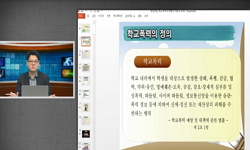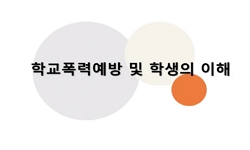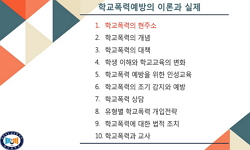The number of pressure ulcer patients is increasing owing to the aging population and increased incidence of elderly illness. This review article aims to introduce the current knowledge on the pathogenesis and prevention of pressure ulcers. The develo...
http://chineseinput.net/에서 pinyin(병음)방식으로 중국어를 변환할 수 있습니다.
변환된 중국어를 복사하여 사용하시면 됩니다.
- 中文 을 입력하시려면 zhongwen을 입력하시고 space를누르시면됩니다.
- 北京 을 입력하시려면 beijing을 입력하시고 space를 누르시면 됩니다.
https://www.riss.kr/link?id=A107243437
- 저자
- 발행기관
- 학술지명
- 권호사항
-
발행연도
2021
-
작성언어
Korean
-
주제어
Pressure ulcer ; Pathogenesis ; Prevention ; Risk factors ; 욕창 ; 발병기전 ; 예방 ; 위험인자
-
등재정보
KCI등재,SCOPUS,ESCI
-
자료형태
학술저널
-
수록면
16-25(10쪽)
-
KCI 피인용횟수
0
- 제공처
- 소장기관
-
0
상세조회 -
0
다운로드
부가정보
다국어 초록 (Multilingual Abstract)
The number of pressure ulcer patients is increasing owing to the aging population and increased incidence of elderly illness. This review article aims to introduce the current knowledge on the pathogenesis and prevention of pressure ulcers. The development of a pressure ulcer is associated with external factors such as pressure, shear stress, and friction and internal factors such as age, general condition, skin condition, and nutritional status. Pressure ulcers typically develop over bone protrusions, which are most pressured by weight, but may also be caused by external pressure by medical devices or other objects applied to the patient. This tissue damage is caused by continuous deformation of the tissue due to the pressure acting perpendicular to the tissue surface and shear stress acting parallel to the tissue, either alone or in combination. Limitation of activity and mobility, skin condition, blood circulation and oxygen saturation, nutrition, humidity, body temperature, age, low pain sensitivity, blood count, and general and mental conditions are the primary risk factors for pressure ulcers. A mattress and cushion that reduce pressure and an appropriate posture are necessary to prevent pressure ulcers. In patients with urinary incontinence, contaminated skin should be washed with a mild detergent and absorbent pads and topical protective agents should be used to protect the skin from moisture. Sufficient nutrition may help prevent wounds in patients who are susceptible to pressure ulcers. Furthermore, early screening, individualized management of posture, and regular skin and nutrition monitoring are essential to prevent pressure ulcers.
참고문헌 (Reference)
1 Todd BA, "Three-dimensional computer model of the human buttocks, in vivo" 31 : 111-119, 1994
2 Gefen A, "The sub-epidermal moisture scanner : the principles of pressure injury prevention using novel early detection technology" 9 : 30-35, 2018
3 Gawlitta D, "The relative contributions of compression and hypoxia to development of muscle tissue damage : an in vitro study" 35 : 273-284, 2007
4 Reuler JB, "The pressure sore : pathophysiology and principles of management" 94 : 661-666, 1981
5 Keane FX, "The minimum physiological mobility requirement for man supported on a soft surface" 16 : 383-389, 1979
6 Haesler E, "The international guideline 2019" European Pressure Ulcer Advisory Panel 2019
7 Gefen A, "The future of pressure ulcer prevention is here : detecting and targeting inflammation early" 19 : 7-13, 2018
8 Gawlitta D, "Temporal differences in the influence of ischemic factors and deformation on the metabolism of engineered skeletal muscle" 103 : 464-473, 2007
9 Guenter P, "Survey of nutritional status in newly hospitalized patients with stage III or stage IV pressure ulcers" 13 : 164-168, 2000
10 Reichel SM, "Shearing force as a factor in decubitus ulcers in paraplegics" 166 : 762-763, 1958
1 Todd BA, "Three-dimensional computer model of the human buttocks, in vivo" 31 : 111-119, 1994
2 Gefen A, "The sub-epidermal moisture scanner : the principles of pressure injury prevention using novel early detection technology" 9 : 30-35, 2018
3 Gawlitta D, "The relative contributions of compression and hypoxia to development of muscle tissue damage : an in vitro study" 35 : 273-284, 2007
4 Reuler JB, "The pressure sore : pathophysiology and principles of management" 94 : 661-666, 1981
5 Keane FX, "The minimum physiological mobility requirement for man supported on a soft surface" 16 : 383-389, 1979
6 Haesler E, "The international guideline 2019" European Pressure Ulcer Advisory Panel 2019
7 Gefen A, "The future of pressure ulcer prevention is here : detecting and targeting inflammation early" 19 : 7-13, 2018
8 Gawlitta D, "Temporal differences in the influence of ischemic factors and deformation on the metabolism of engineered skeletal muscle" 103 : 464-473, 2007
9 Guenter P, "Survey of nutritional status in newly hospitalized patients with stage III or stage IV pressure ulcers" 13 : 164-168, 2000
10 Reichel SM, "Shearing force as a factor in decubitus ulcers in paraplegics" 166 : 762-763, 1958
11 Bennett L, "Shear vs pressure as causative factors in skin blood flow occlusion" 60 : 309-314, 1979
12 Mino Y, "Risk factors for pressure ulcers in bedridden elderly subjects : Importance of turning over in bed and serum albumin level" 1 : 38-44, 2001
13 Allman RM, "Pressure ulcer prevalence, incidence, risk factors and impact" 13 : 421-436, 1997
14 McClemont EJ, "Pressure sores. No pressure, no sore" 2 (2): 1-3, 1984
15 Gosnell DJ, "Pressure sore risk assessment. Part II. Analysis of risk factors" 2 : 40-43, 1989
16 Gray RJ, "Monitoring contractile dermal lymphatic activity following uniaxial mechanical loading" 38 : 895-903, 2016
17 Landis EM, "Micro-injection studies of capillary blood pressure in human skin" 15 : 209-228, 1930
18 Lyder CH, "Hospital-acquired pressure ulcers : results from the national Medicare Patient Safety Monitoring System study" 60 : 1603-1608, 2012
19 Salcido R, "Histopathology of pressure ulcers as a result of sequential computer-controlled pressure sessions in a fuzzy rat model" 7 : 23-24, 1994
20 Wu Q, "Factors affecting the length of stay of patients with traumatic spinal cord injury in Tianjin, China" 36 : 237-242, 2013
21 Daniel RK, "Etiologic factors in pressure sores : an experimental model" 62 : 492-498, 1981
22 Schwartz D, "Effects of humidity on skin friction against medical textiles as related to prevention of pressure injuries" 15 : 866-874, 2018
23 Nola GT, "Differential response of skin and muscle in the experimental production of pressure sores" 66 : 728-733, 1980
24 Dinsdale SM, "Decubitus ulcers : role of pressure and friction in causation" 55 : 147-152, 1974
25 Wilson JR, "Clinical prediction model for acute inpatient complications after traumatic cervical spinal cord injury : a subanalysis from the Surgical Timing in Acute Spinal Cord Injury Study" 17 (17): 46-51, 2012
26 Mathus-Vliegen EM, "Clinical observations : nutritional status, nutrition, and pressure ulcers" 16 : 286-291, 2001
27 Bennett L, "Chronic ulcers of the skin" McGraw Hill 39-55, 1985
28 Gefen A, "An observational, prospective cohort pilot study to compare the use of subepidermal moisture measurements versus ultrasound and visual skin assessments for early detection of pressure injury" 64 : 12-27, 2018
29 Husain T, "An experimental study of some pressure effects on tissues, with reference to the bed-sore problem" 66 : 347-358, 1953
30 Thomas DR, "A prospective study of outcome from protein-energy malnutrition in nursing home residents" 15 : 400-404, 1991
31 Coleman S, "A new pressure ulcer conceptual framework" 70 : 2222-2234, 2014
동일학술지(권/호) 다른 논문
-
- 대한의사협회
- 이상훈
- 2021
- KCI등재,SCOPUS,ESCI
-
- 대한의사협회
- 윤을식
- 2021
- KCI등재,SCOPUS,ESCI
-
- 대한의사협회
- 권국주
- 2021
- KCI등재,SCOPUS,ESCI
-
- 대한의사협회
- 정희선
- 2021
- KCI등재,SCOPUS,ESCI
분석정보
인용정보 인용지수 설명보기
학술지 이력
| 연월일 | 이력구분 | 이력상세 | 등재구분 |
|---|---|---|---|
| 2024 | 평가예정 | 해외DB학술지평가 신청대상 (해외등재 학술지 평가) | |
| 2021-01-01 | 평가 | 등재학술지 선정 (해외등재 학술지 평가) |  |
| 2020-12-01 | 평가 | 등재 탈락 (해외등재 학술지 평가) | |
| 2013-10-01 | 평가 | 등재학술지 선정 (기타) |  |
| 2011-01-01 | 평가 | 등재후보학술지 유지 (기타) |  |
| 2007-01-01 | 평가 | SCOPUS 등재 (신규평가) |  |
학술지 인용정보
| 기준연도 | WOS-KCI 통합IF(2년) | KCIF(2년) | KCIF(3년) |
|---|---|---|---|
| 2016 | 0.33 | 0.33 | 0.48 |
| KCIF(4년) | KCIF(5년) | 중심성지수(3년) | 즉시성지수 |
| 0.5 | 0.57 | 0.815 | 0.12 |





 KCI
KCI







